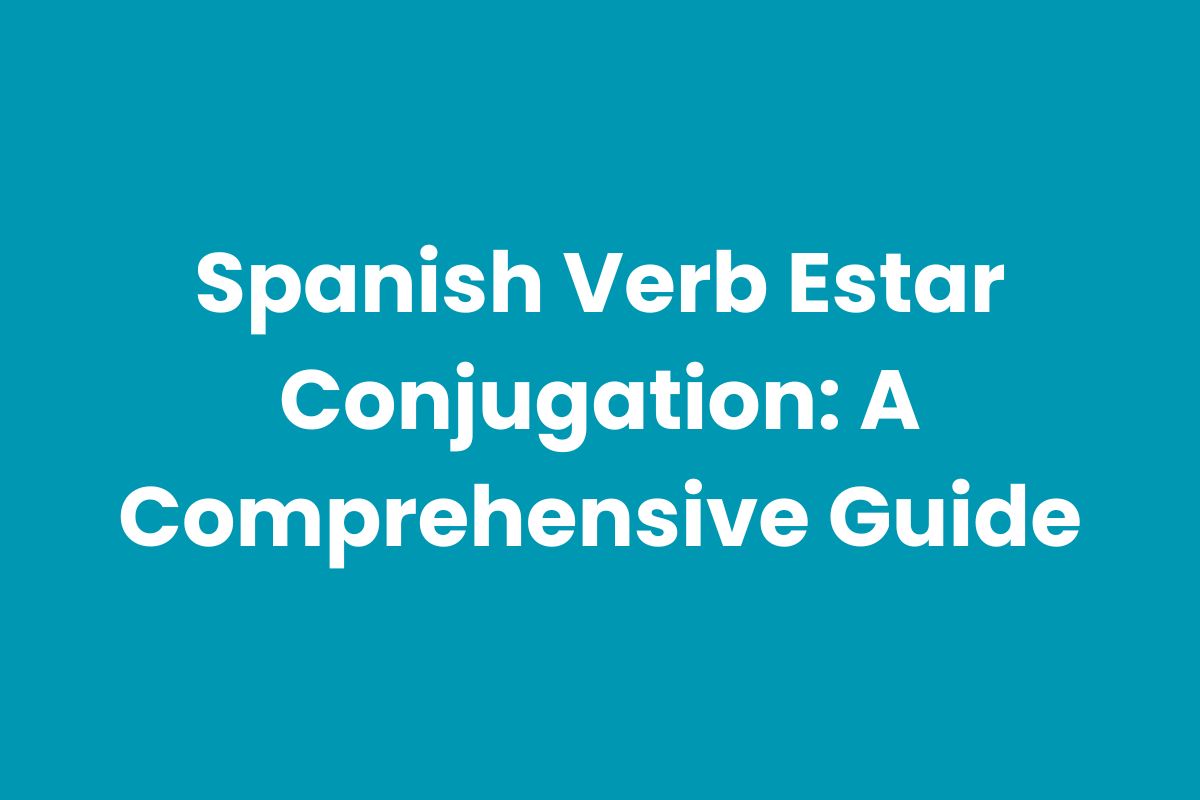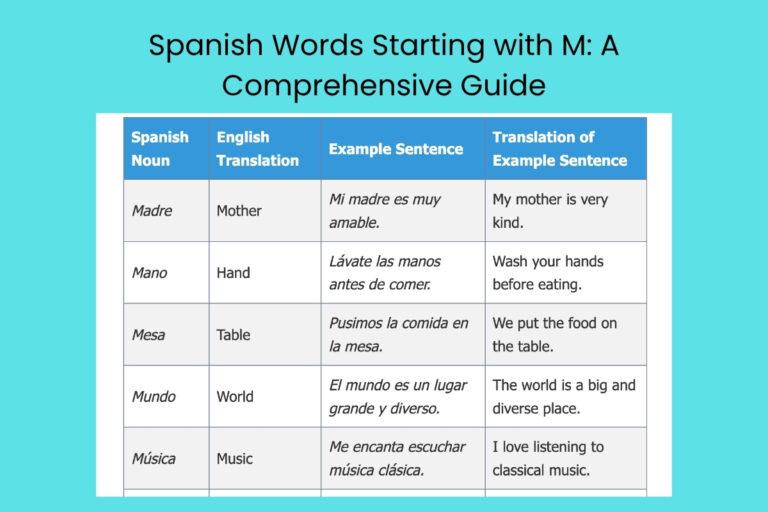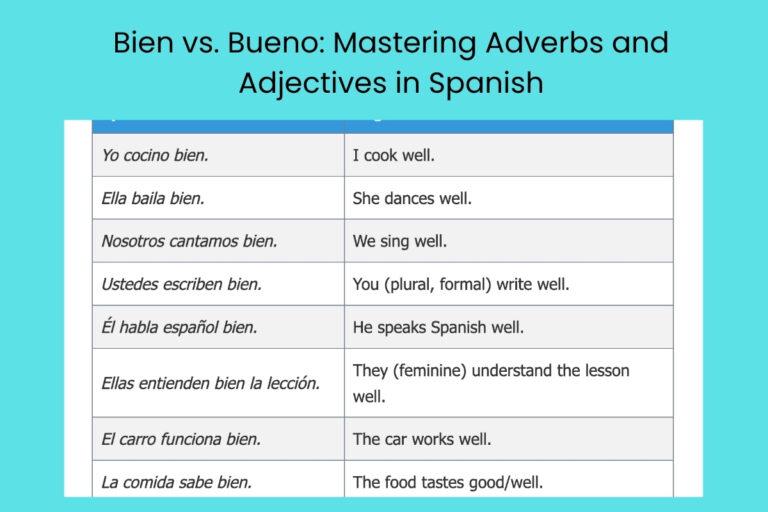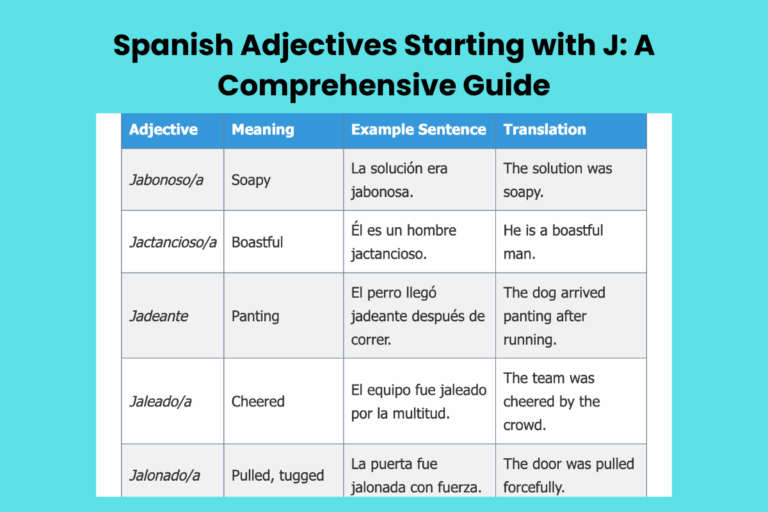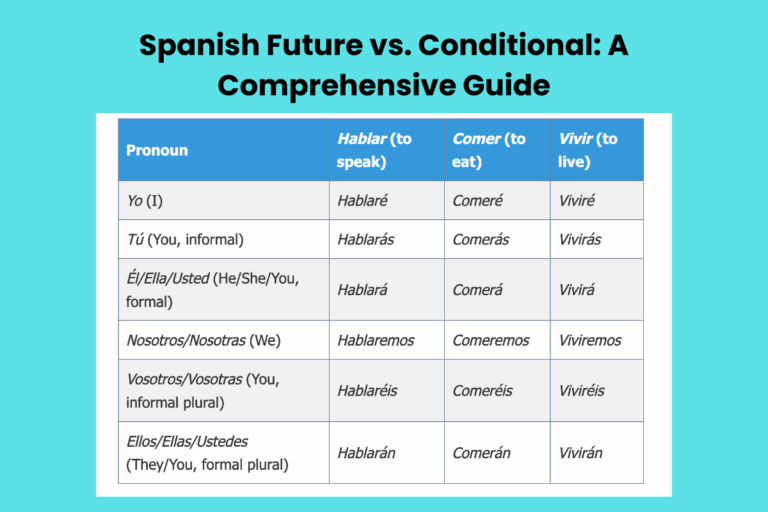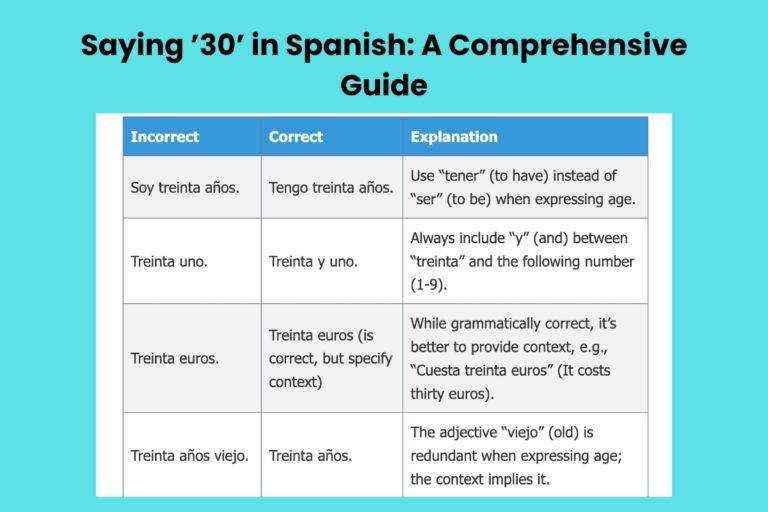Spanish Verb Estar Conjugation: A Comprehensive Guide
Understanding the Spanish verb estar is crucial for expressing temporary states, locations, and conditions. Unlike ser, which describes permanent characteristics, estar focuses on what is happening or how someone or something is at a particular moment. Mastering its conjugation is essential for any Spanish learner aiming for fluency. This guide provides a comprehensive overview of estar conjugation, its uses, common mistakes, and practice exercises to help you confidently incorporate it into your Spanish.
Whether you are a beginner just starting your Spanish journey or an intermediate learner looking to refine your skills, this article will provide you with the necessary tools and knowledge to master estar. By understanding the nuances of estar conjugation, you’ll be able to express yourself more accurately and naturally in Spanish, opening up a world of communication possibilities.
Table of Contents
- Definition of Estar
- Structural Breakdown of Estar Conjugation
- Types and Categories of Estar Usage
- Examples of Estar Conjugation in Use
- Usage Rules for Estar
- Common Mistakes with Estar
- Practice Exercises
- Advanced Topics: Nuances of Estar
- Frequently Asked Questions (FAQ)
- Conclusion
Definition of Estar
The Spanish verb estar is an irregular verb that primarily translates to “to be” in English. However, unlike its counterpart ser, estar is used to describe temporary states, locations, conditions, and ongoing actions. It’s crucial to differentiate between ser and estar to avoid grammatical errors and convey the intended meaning accurately. The verb estar allows us to express how things are at a specific point in time, rather than their inherent qualities.
Estar belongs to the category of auxiliary verbs because it is frequently used with gerunds to form progressive tenses. These tenses describe actions that are currently in progress. In essence, estar indicates a state of being that is not permanent or inherent, but rather circumstantial or transient. This makes it an essential verb for describing daily activities, emotions, locations, and physical conditions.
The function of estar extends beyond simple translation; it provides context and nuance to descriptions. For instance, saying “Estoy feliz” (I am happy) implies a temporary state of happiness, while “Soy feliz” (I am happy) using ser suggests a more inherent, long-lasting happiness. The ability to choose between ser and estar correctly is a hallmark of proficient Spanish usage.
Structural Breakdown of Estar Conjugation
Estar is an irregular verb, meaning its conjugation does not follow the standard patterns of regular verbs. This irregularity primarily affects the present tense and the preterite tense. Understanding the conjugation patterns is crucial for accurate usage.
Present Tense Conjugation
The present tense of estar is particularly important as it is used frequently in everyday conversation. The conjugation is as follows:
- Yo – Estoy (I am)
- Tú – Estás (You are, informal)
- Él/Ella/Usted – Está (He/She/You are, formal)
- Nosotros/Nosotras – Estamos (We are)
- Vosotros/Vosotras – Estáis (You are, informal plural, mainly used in Spain)
- Ellos/Ellas/Ustedes – Están (They/You are, formal plural)
Preterite Tense Conjugation
The preterite tense is used to describe actions or states that were completed in the past. The conjugation of estar in the preterite tense is:
- Yo – Estuve (I was)
- Tú – Estuviste (You were, informal)
- Él/Ella/Usted – Estuvo (He/She/You were, formal)
- Nosotros/Nosotras – Estuvimos (We were)
- Vosotros/Vosotras – Estuvisteis (You were, informal plural, mainly used in Spain)
- Ellos/Ellas/Ustedes – Estuvieron (They/You were, formal plural)
Imperfect Tense Conjugation
The imperfect tense is used to describe ongoing or habitual actions in the past. The conjugation of estar in the imperfect tense is:
- Yo – Estaba (I was being)
- Tú – Estabas (You were being, informal)
- Él/Ella/Usted – Estaba (He/She/You were being, formal)
- Nosotros/Nosotras – Estábamos (We were being)
- Vosotros/Vosotras – Estabais (You were being, informal plural, mainly used in Spain)
- Ellos/Ellas/Ustedes – Estaban (They/You were being, formal plural)
Future Tense Conjugation
The future tense is used to describe actions or states that will occur in the future. The conjugation of estar in the future tense is:
- Yo – Estaré (I will be)
- Tú – Estarás (You will be, informal)
- Él/Ella/Usted – Estará (He/She/You will be, formal)
- Nosotros/Nosotras – Estaremos (We will be)
- Vosotros/Vosotras – Estaréis (You will be, informal plural, mainly used in Spain)
- Ellos/Ellas/Ustedes – Estarán (They/You will be, formal plural)
Conditional Tense Conjugation
The conditional tense is used to describe actions or states that would occur under certain conditions. The conjugation of estar in the conditional tense is:
- Yo – Estaría (I would be)
- Tú – Estarías (You would be, informal)
- Él/Ella/Usted – Estaría (He/She/You would be, formal)
- Nosotros/Nosotras – Estaríamos (We would be)
- Vosotros/Vosotras – Estaríais (You would be, informal plural, mainly used in Spain)
- Ellos/Ellas/Ustedes – Estarían (They/You would be, formal plural)
Subjunctive Mood
The subjunctive mood is used to express doubts, wishes, possibilities, or hypothetical situations. Here are the present and imperfect subjunctive conjugations:
Present Subjunctive
- Yo – Esté
- Tú – Estés
- Él/Ella/Usted – Esté
- Nosotros/Nosotras – Estemos
- Vosotros/Vosotras – Estéis
- Ellos/Ellas/Ustedes – Estén
Imperfect Subjunctive
- Yo – Estuviera/Estuviese
- Tú – Estuvieras/Estuvieses
- Él/Ella/Usted – Estuviera/Estuviese
- Nosotros/Nosotras – Estuviéramos/Estuviésemos
- Vosotros/Vosotras – Estuvierais/Estuvieseis
- Ellos/Ellas/Ustedes – Estuvieran/Estuviesen
Types and Categories of Estar Usage
Estar is used in several key contexts, each with its own specific nuances. Understanding these categories will help you use estar correctly and effectively.
Locations
Estar is used to indicate the location of people, places, and things. This is one of its most common uses.
Temporary States and Conditions
This includes physical conditions, emotions, and temporary situations.
Progressive Tenses
Estar is used with the gerund (present participle) to form progressive tenses, indicating actions in progress.
With Certain Adjectives
Some adjectives change meaning depending on whether they are used with ser or estar. This is a crucial distinction to understand.
Examples of Estar Conjugation in Use
To solidify your understanding of estar conjugation, let’s explore several examples in various contexts. These examples will demonstrate how estar is used to express locations, temporary states, progressive tenses, and with specific adjectives.
Examples of Estar Indicating Location
The following table provides examples of using estar to indicate the location of people and objects. Notice how estar specifies where someone or something *is* at a particular moment.
| Subject | Verb (Estar) | Location | Translation |
|---|---|---|---|
| Yo | Estoy | en casa | I am at home. |
| Tú | Estás | en la escuela | You are at school. |
| Él | Está | en el trabajo | He is at work. |
| Ella | Está | en la tienda | She is at the store. |
| Usted | Está | en el hotel | You are at the hotel. (formal) |
| Nosotros | Estamos | en el parque | We are at the park. |
| Vosotros | Estáis | en la playa | You are at the beach. (informal plural) |
| Ellos | Están | en el cine | They are at the cinema. |
| Ellas | Están | en la biblioteca | They are at the library. |
| Ustedes | Están | en el restaurante | You are at the restaurant. (formal plural) |
| El libro | Está | sobre la mesa | The book is on the table. |
| La llave | Está | en el cajón | The key is in the drawer. |
| Mi coche | Está | en el garaje | My car is in the garage. |
| El perro | Está | debajo de la cama | The dog is under the bed. |
| La ciudad | Está | cerca del mar | The city is near the sea. |
| El museo | Está | en el centro | The museum is in the center. |
| La farmacia | Está | a la derecha del banco | The pharmacy is to the right of the bank. |
| El café | Está | enfrente del teatro | The cafe is in front of the theater. |
| Mi casa | Está | lejos de la estación | My house is far from the station. |
| La oficina | Está | en el tercer piso | The office is on the third floor. |
| El cuadro | Está | en la pared | The painting is on the wall. |
| El gato | Está | encima del techo | The cat is on top of the roof. |
| El aeropuerto | Está | fuera de la ciudad | The airport is outside the city. |
Examples of Estar Indicating Temporary States and Conditions
This table illustrates how estar is used to describe temporary states, emotions, and physical conditions. Note that these are not permanent characteristics but rather transient states.
| Subject | Verb (Estar) | State/Condition | Translation |
|---|---|---|---|
| Yo | Estoy | cansado | I am tired. |
| Tú | Estás | feliz | You are happy. |
| Él | Está | enfermo | He is sick. |
| Ella | Está | preocupada | She is worried. |
| Usted | Está | ocupado | You are busy. (formal) |
| Nosotros | Estamos | aburridos | We are bored. |
| Vosotros | Estáis | contentos | You are happy. (informal plural) |
| Ellos | Están | nerviosos | They are nervous. |
| Ellas | Están | emocionadas | They are excited. |
| Ustedes | Están | listos | You are ready. (formal plural) |
| La puerta | Está | abierta | The door is open. |
| La ventana | Está | cerrada | The window is closed. |
| La comida | Está | caliente | The food is hot. |
| El agua | Está | fría | The water is cold. |
| El cielo | Está | nublado | The sky is cloudy. |
| El café | Está | delicioso | The coffee is delicious. |
| La clase | Está | interesante | The class is interesting. |
| El problema | Está | resuelto | The problem is solved. |
| La situación | Está | complicada | The situation is complicated. |
| El piso | Está | limpio | The floor is clean. |
| La casa | Está | ordenada | The house is tidy. |
| El coche | Está | averiado | The car is broken down. |
Examples of Estar in Progressive Tenses
The following table demonstrates the use of estar with the gerund to form progressive tenses, indicating actions that are currently in progress. Note the use of the -ando/-iendo endings on the verbs.
| Subject | Verb (Estar) | Gerund | Translation |
|---|---|---|---|
| Yo | Estoy | hablando | I am talking. |
| Tú | Estás | comiendo | You are eating. |
| Él | Está | durmiendo | He is sleeping. |
| Ella | Está | leyendo | She is reading. |
| Usted | Está | escribiendo | You are writing. (formal) |
| Nosotros | Estamos | aprendiendo | We are learning. |
| Vosotros | Estáis | viviendo | You are living. (informal plural) |
| Ellos | Están | trabajando | They are working. |
| Ellas | Están | estudiando | They are studying. |
| Ustedes | Están | cocinando | You are cooking. (formal plural) |
| El perro | Está | ladrando | The dog is barking. |
| El gato | Está | jugando | The cat is playing. |
| El niño | Está | llorando | The boy is crying. |
| La niña | Está | riendo | The girl is laughing. |
| El sol | Está | brillando | The sun is shining. |
| La lluvia | Está | cayendo | The rain is falling. |
| La gente | Está | esperando | The people are waiting. |
| Los pájaros | Están | cantando | The birds are singing. |
| El tren | Está | llegando | The train is arriving. |
| El avión | Está | despegando | The plane is taking off. |
Examples of Estar with Certain Adjectives
This table shows how the meaning of adjectives can change when used with estar compared to ser. This distinction is crucial for accurate communication.
| Adjective | With Ser (Meaning) | With Estar (Meaning) | Example with Ser | Example with Estar |
|---|---|---|---|---|
| Listo | Clever, intelligent | Ready | Él es listo. (He is clever.) | Él está listo. (He is ready.) |
| Aburrido | Boring | Bored | La clase es aburrida. (The class is boring.) | Estoy aburrido. (I am bored.) |
| Callado | Quiet (by nature) | Quiet (at the moment) | Él es callado. (He is a quiet person.) | Él está callado. (He is being quiet.) |
| Vivo | Lively, bright | Alive | El color es vivo. (The color is bright.) | Él está vivo. (He is alive.) |
| Bueno | Good (inherently) | Good (taste, health) | Él es bueno. (He is a good person.) | La sopa está buena. (The soup tastes good.) |
Usage Rules for Estar
Using estar correctly involves understanding specific rules and contexts. Here are the main guidelines to follow:
Rule 1: Locations
Use estar to indicate the location of people, places, and things. This is a fundamental rule.
Rule 2: Temporary States and Conditions
Use estar to describe temporary physical and emotional states or conditions.
Rule 3: Progressive Tenses
Use estar with the gerund (-ando/-iendo) to form progressive tenses, indicating ongoing actions.
Rule 4: With Adjectives That Change Meaning
Be mindful of adjectives that change meaning depending on whether they are used with ser or estar. This requires careful attention and practice.
Exceptions and Special Cases
- Fixed Expressions: Some expressions use estar in ways that might not seem strictly temporary. For example, “Estar de acuerdo” (to agree) uses estar even though agreement can be long-lasting.
- Implied Location: Sometimes, the location is implied rather than explicitly stated. For example, “Estoy trabajando” (I am working) implies that you are at your place of work or wherever you are currently working.
Common Mistakes with Estar
One of the most common mistakes Spanish learners make is confusing ser and estar. Here are some examples of common errors and how to correct them:
| Incorrect | Correct | Explanation |
|---|---|---|
| Soy cansado. | Estoy cansado. | Cansado (tired) is a temporary state, so use estar. |
| El libro es en la mesa. | El libro está en la mesa. | Location requires estar. |
| Estoy alto. | Soy alto. | Alto (tall) is a permanent characteristic, so use ser. |
| Ella es leyendo. | Ella está leyendo. | Progressive tenses require estar + gerund. |
| Estamos serios. | Estamos serios. | Seriousness can be both a temporary state and a permanent characteristic, but here we are talking about a temporary state. |
Practice Exercises
Test your knowledge of estar conjugation with these practice exercises. Fill in the blanks with the correct form of estar.
Exercise 1: Present Tense
| Sentence | Correct Answer |
|---|---|
| Yo _______ en casa ahora. | Estoy |
| Tú _______ muy feliz hoy. | Estás |
| Él _______ trabajando en la oficina. | Está |
| Nosotros _______ comiendo en el restaurante. | Estamos |
| Vosotros _______ estudiando para el examen. | Estáis |
| Ellos _______ jugando en el parque. | Están |
| La puerta _______ abierta. | Está |
| El libro _______ sobre la mesa. | Está |
| La comida _______ deliciosa. | Está |
| El cielo _______ nublado hoy. | Está |
Exercise 2: Preterite Tense
| Sentence | Correct Answer |
|---|---|
| Yo _______ en la fiesta ayer. | Estuve |
| Tú _______ muy ocupado la semana pasada. | Estuviste |
| Él _______ enfermo el mes pasado. | Estuvo |
| Nosotros _______ de vacaciones en España. | Estuvimos |
| Vosotros _______ en el cine anoche. | Estuvisteis |
| Ellos _______ en la reunión esta mañana. | Estuvieron |
| La tienda _______ cerrada ayer. | Estuvo |
| El coche _______ averiado la semana pasada. | Estuvo |
| La casa _______ limpia después de limpiar. | Estuvo |
| El tiempo _______ bueno durante el verano. | Estuvo |
Exercise 3: Imperfect Tense
| Sentence | Correct Answer |
|---|---|
| Yo _______ leyendo un libro cuando llegaste. | Estaba |
| Tú _______ trabajando en ese proyecto el año pasado. | Estabas |
| Él _______ viviendo en París cuando lo conocí. | Estaba |
| Nosotros _______ estudiando español todos los días. | Estábamos |
| Vosotros _______ jugando al fútbol en el parque. | Estabais |
| Ellos _______ mirando la televisión cuando sonó el teléfono. | Estaban |
| La ventana _______ abierta durante la noche. | Estaba |
| El clima _______ frío en invierno. | Estaba |
| La ciudad _______ tranquila por la mañana. | Estaba |
| La comida _______ siempre deliciosa en ese restaurante. | Estaba |
Advanced Topics: Nuances of Estar
For advanced learners, understanding the subtle nuances of estar can significantly improve fluency and accuracy.
Estar vs. Ser with Emotions
While estar generally indicates temporary emotions, there are cases where ser can be used to describe someone’s general disposition or personality trait related to emotions. For example, “Es alegre” (He/She is cheerful) describes a generally cheerful person, while “Está alegre” (He/She is cheerful) describes someone who is cheerful at the moment.
Estar + “de” + Profession/Role
Estar de followed by a profession or role indicates that someone is temporarily working as or acting as that role. For example, “Estoy de camarero” (I am working as a waiter) implies that you are temporarily filling that role.
Estar para
Estar para can express readiness or inclination to do something. For example, “Estoy para salir” (I am about to leave) indicates that you are ready and about to leave.
Frequently Asked Questions (FAQ)
- What is the difference between ser and estar?
Ser is used for permanent or inherent characteristics, such as personality traits, origin, and physical attributes. Estar is used for temporary states, locations, conditions, and ongoing actions. The key difference lies in the permanence of the characteristic being described.
- How do I know when to use estar for location?
Use estar to indicate the location of people, places, and things at a specific point in time. If you’re describing *where* something is, rather than a permanent attribute of the place itself, use estar.
- Can estar be used with all adjectives?
No, not all adjectives can be used with estar. Many adjectives have different meanings depending on whether they are used with ser or estar. It’s essential to learn these distinctions to avoid errors.
- What is the gerund form, and how is it used with estar?
The gerund form is the present participle of a verb, ending in -ando (for -ar verbs) or -iendo (for -er and -ir verbs). It’s used with estar to form progressive tenses, indicating actions in progress. For example, “Estoy hablando” (I am talking).
- Is estar always irregular?
Estar is considered an irregular verb because its conjugation in the present tense and preterite tense does not follow the standard patterns of regular verbs. However, in other tenses like the imperfect and future, it follows more predictable patterns.
- How can I practice using estar effectively?
Practice using estar by creating sentences and engaging in conversations in Spanish. Focus on using estar in different contexts, such as describing locations, emotions, and ongoing actions. Pay attention to the usage of native speakers and ask for feedback from teachers or language partners.
- What are some common fixed expressions that use estar?
Some common fixed expressions that use estar include “Estar de acuerdo” (to agree), “Estar de moda” (to be in fashion), and “Estar a punto de” (to be about to). These expressions often have idiomatic meanings that are best learned through memorization and practice.
- How does regional variation affect the use of estar?
While the basic rules of estar conjugation and usage are consistent across Spanish-speaking regions, there may be slight variations in colloquial expressions and idiomatic phrases. For example, the use of vosotros is primarily found in Spain, while in Latin America, ustedes is used for both formal and informal plural “you.”
- Can estar be used to describe personality traits?
Generally, personality traits are described using ser. However, estar can be used to describe temporary states that might reflect a person’s mood or behavior at a particular moment. For example, “Está simpático hoy” (He/She is being nice today) implies that this is not necessarily their usual behavior.
- What is the difference between “estar bien” and “ser bueno“?
“Estar bien” means “to be well” or “to be okay,” referring to health or general condition. “Ser bueno” means “to be good,” referring to moral character or quality. For example, “Estoy bien, gracias” (I am well, thank you) and “Él es un buen hombre” (He is a good man).
- Is it possible to use both ser and estar in the same sentence? If so, how?
Yes, it is possible, but it’s essential to understand the context. For example: “Soy profesor, pero ahora estoy de vacaciones” (I am a teacher, but now I am on vacation). Here, ser describes the permanent profession, and estar describes the temporary state.
- How can I best remember the irregular conjugations of estar?
Repetition, practice, and mnemonic devices can be helpful. Create flashcards, use the verb in sentences, and try to associate the irregular forms with specific situations or images. Consistent exposure and active recall are key to memorization.
Conclusion
Mastering the conjugation and usage of estar is a significant step towards fluency in Spanish. By understanding its role in describing temporary states, locations, and ongoing actions, you can express yourself more accurately and naturally. Remember to differentiate between ser and estar,
and practice regularly to solidify your knowledge. With consistent effort, you’ll confidently use estar in your everyday Spanish conversations, enhancing your communication skills and opening up new opportunities to connect with Spanish speakers.

